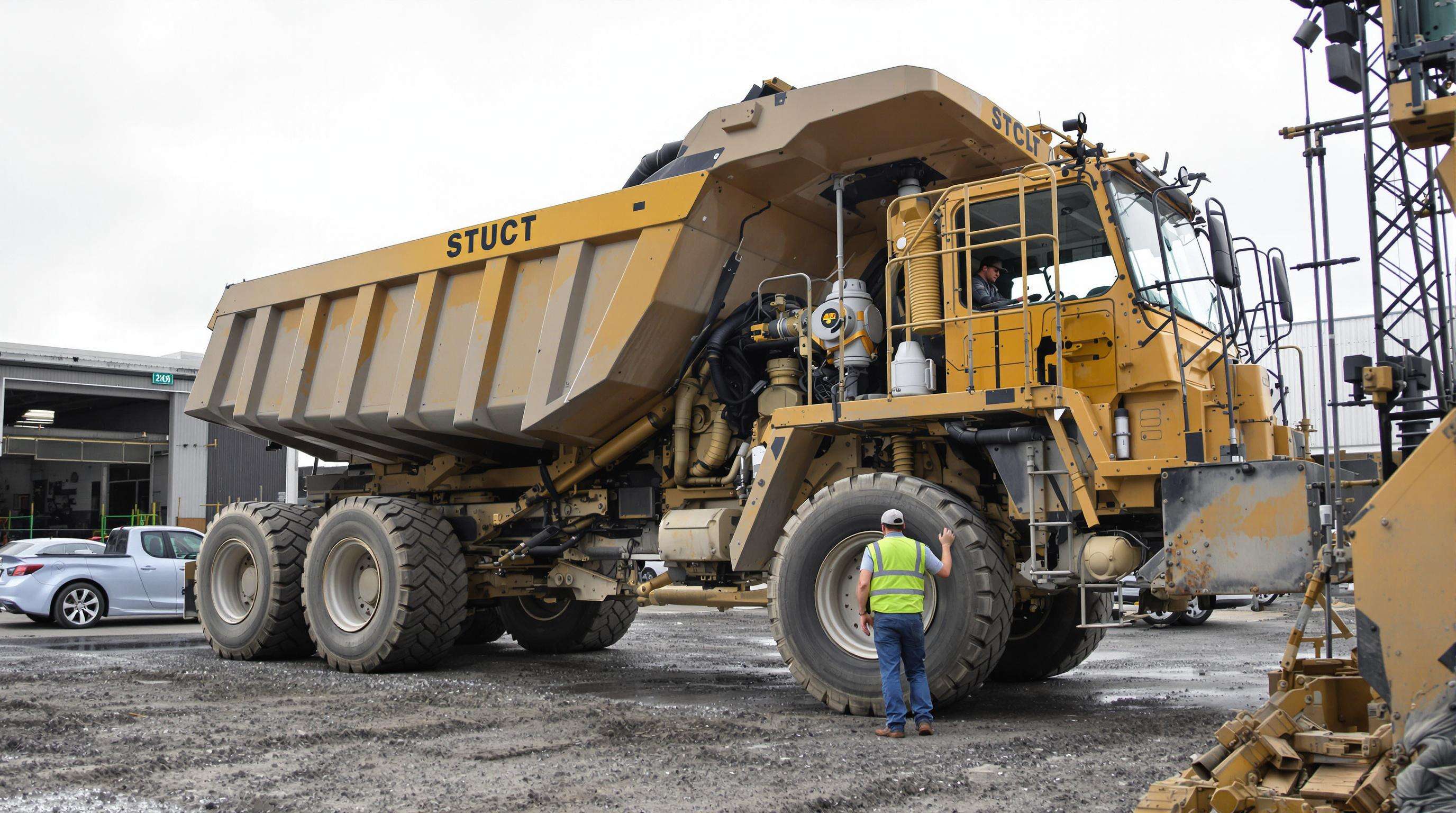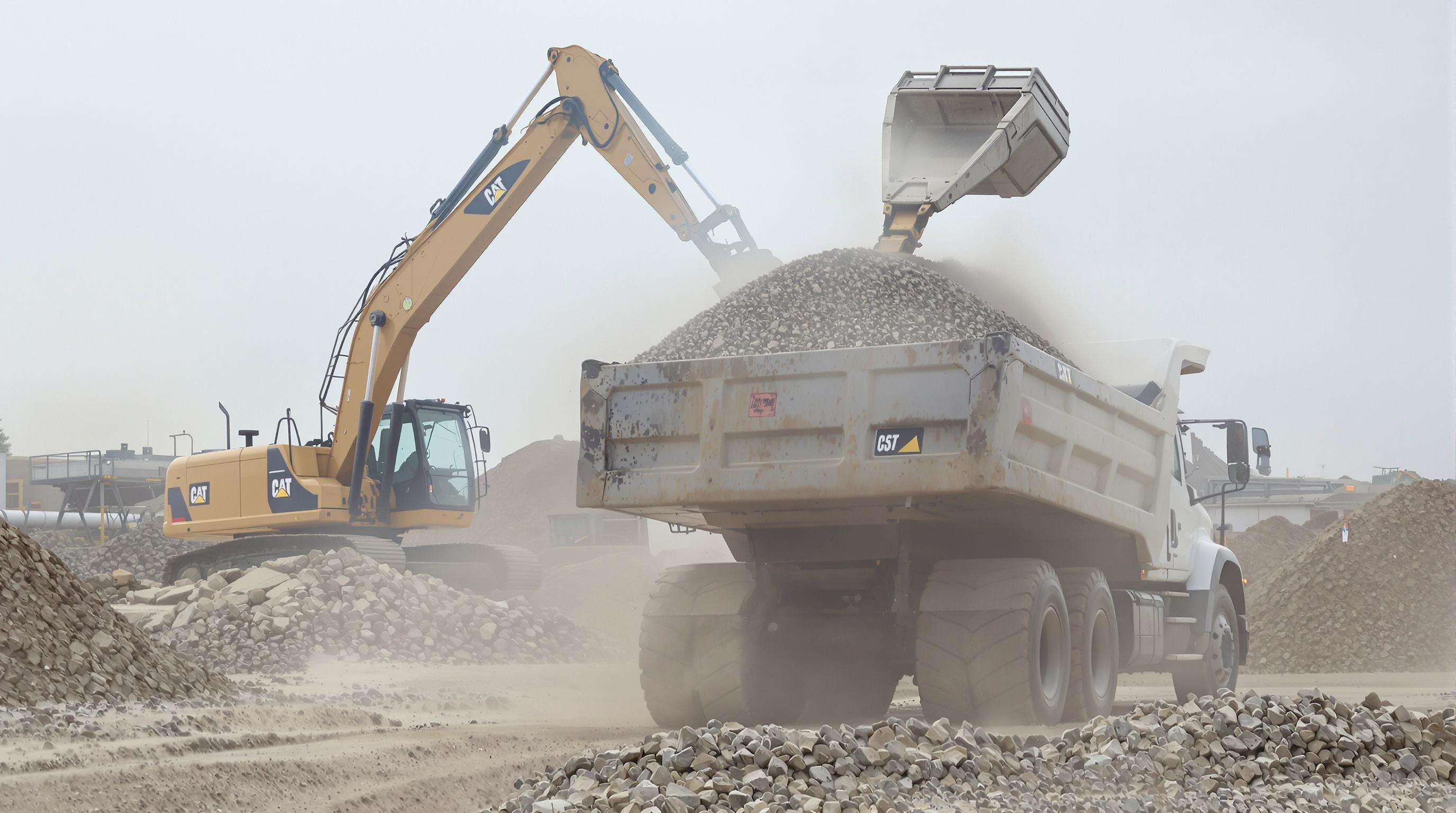Assessing Operational Requirements for a High-Efficiency Dump Truck
Understanding your operational environment and job site demands
What happens around a dump truck makes all the difference in how it performs day to day. Ground conditions matter a lot, as do those steep inclines we often see on job sites. When slopes reach 15 degrees or more, traction drops off by about forty percent. Wet or icy roads require special attention too since regular tires just won't cut it anymore. Tires need roughly thirty percent deeper treads to grip properly under these conditions. Speaking of space constraints, city work presents unique challenges. Articulated models actually turn corners much better than their rigid counterparts, with turning circles about twenty percent smaller. This matters when navigating narrow streets or crowded construction zones. And let's not forget safety concerns for certain environments. Around explosive materials or when dealing with really rough substances, equipment needs extra protection. Dust suppression systems become essential while reinforced frames help protect against wear and tear over time.
Matching tipper truck capabilities to workload frequency and duration
Heavy duty trucks that run for 12 hours or more each day need engines capable of handling about 15% extra cooling power just to stay from overheating. The latest report on mining and quarry dump trucks from 2024 shows something interesting too. When equipment isn't matched properly, it actually wastes around 23% of potential efficiency during those intense operations. And when looking at longer term projects stretching past six months, it pays off big time to go with truck models rated for 50,000 hour service intervals rather than the usual 30,000 hour setups. This simple switch cuts down on both downtime and how often maintenance crews have to step in.
Evaluating terrain and site conditions for optimal adaptability
Driving on loose gravel can cut down braking effectiveness by around 35% when compared to regular road surfaces, which means vehicles need stronger brakes to stop safely. When dealing with rough terrain where the ground isn't stable at all, articulated dump trucks become really useful because they have those extra flexible joints that let them turn sharper corners. These trucks typically offer about 18 degrees more articulation than standard models, giving better control over heavy loads. For places where trucks need to handle both rough terrain and paved roads, there are models equipped with switchable four wheel drive systems. These allow good grip when going off road but also save fuel by roughly 12% when driving on normal roads.
Key Components That Define a High-Efficiency Dump Truck

Chassis Strength and Durability: Foundation for Long-Term Reliability
A heavy-duty steel chassis with reinforced crossmembers withstands stress from uneven loads and rough terrain. Trucks built with fatigue-resistant materials reduce maintenance costs by 18% over five years (Heavy Equipment Insights 2023), minimizing structural damage and extending service life.
Tipper Body Design and Its Impact on Load Handling Efficiency
Angled sidewalls and hardened steel plating reduce material adhesion, while tapered rear designs accelerate discharge. Optimized body geometry improves stability during transit and cuts spillage-related cleanup time by 27% in aggregate transport, enhancing overall site efficiency.
Hydraulic System Performance and Cycle Time Optimization
High-pressure hydraulic systems operating at ¥3,500 PSI enable full dumping in under 25 seconds, boosting productivity. Load-sensing valves adjust fluid flow based on resistance, reducing energy waste during partial lifts. Regular inspection of cylinder seals and hoses prevents leaks and unplanned downtime, especially critical in operations requiring 15+ daily cycles.
Engine Integration and Cab Ergonomics for Operational Efficiency
Modular engine placement improves weight distribution, increasing fuel economy by 12% in stop-start conditions. Operator-focused cabs with adjustable suspension seats and intuitive controls reduce fatigue during long shifts. Noise-dampened, air-conditioned interiors help maintain compliance with OSHA's 85 dB exposure limits, supporting both safety and sustained performance.
Payload Capacity and Engine Efficiency: Maximizing Productivity

Understanding Payload vs. Load Capacity for Accurate Planning
Payload capacity refers to the maximum safe weight a truck can carry, while load capacity indicates the structural limit of the bed. A 2024 fleet efficiency study found that 38% of construction firms miscalculate needs by confusing these metrics, resulting in underused assets or accelerated wear.
| Metric | Purpose | Financial Impact |
|---|---|---|
| Payload Capacity | Safety & Regulatory Compliance | $8k avg. fine per violation |
| Load Capacity | Equipment Longevity | 12-18% repair cost reduction |
Balancing Engine Power and Fuel Efficiency in Real-World Operations
Trucks operating at 65–80% of rated power achieve 19% better fuel economy than those running at peak load (2024 Heavy-Duty Vehicle Efficiency Report). This optimal range also reduces idle fuel consumption by 27% in stop-start environments, improving efficiency without sacrificing performance.
Fuel Efficiency's Role in Reducing Total Cost of Ownership Over Time
Every 0.5 MPG improvement saves approximately $2,800 annually based on 35,000 miles of operation. Advanced torque management systems reduce energy waste during load transitions by 41%, extending service intervals by 150–200 hours and lowering long-term ownership costs.
Case Study: How Underestimating Payload Needs Increases Costs by 23%
A municipal project using 10-ton trucks for 14-ton weekly gravel hauls required 53% more trips than planned. The resulting fuel and labor overages totaled $147,000—costs that could have been avoided with accurate payload analysis and proper equipment selection.
Choosing the Right Tipper Truck Type for Your Application
Selecting the optimal tipper truck configuration ensures alignment with operational demands while maximizing productivity and safety. Below we break down critical selection criteria for three primary configurations.
Rigid vs. Articulated vs. Off-Road: Key Differences and Use Cases
| Truck Type | Key Features | Best Use Cases |
|---|---|---|
| Rigid | Fixed chassis, higher stability | Urban construction, short-haul |
| Articulated | Pivot joint, 35°+ steering angle | Tight worksites, uneven terrain |
| Off-Road | Reinforced chassis, 4WD, 50"+ tire clearance | Mining, forestry, quarries |
The rigid truck models handle really well on pavement and work great when doing lots of short trips around town. Articulated trucks cut down on turning space needed by about 40 percent over their rigid counterparts, which makes all the difference when working in tight spaces during city construction projects. For rough terrain jobs, off road versions stand out with better grip and tougher build quality. These bad boys can tackle slopes as steep as 35% even when things get muddy or rocky down there.
Maneuverability and Stability: Trade-Offs Between Rigid and Articulated Models
Rigid dump trucks provide predictable handling and lower rollover risks (<2% accident rate on paved surfaces) but require 30% more space for U-turns. Articulated models improve loading cycle efficiency—reducing cycle times by 18% in congested sites (2023 CONEXPO study)—though operators must exercise caution on slopes exceeding 15° due to reduced stability.
When to Invest in Off-Road Dump Trucks for Extreme Terrain
Choose off-road dump trucks when operations involve:
- Daily travel over non-compacted surfaces like loose gravel or wetlands
- Loads exceeding 40 tons in mountainous regions
- Sustained inclines greater than 25°
These models feature advanced drivetrains and wear-resistant components that cut annual maintenance costs by up to $12,000 in harsh environments compared to modified standard trucks.
Ensuring Safety, Compliance, and Cost-Effectiveness in Acquisition
Essential safety features for driver and worksite protection
Modern high-efficiency dump trucks include automatic collision avoidance, 360° camera systems, and stability control, which reduces rollover risk by 42% on uneven terrain (Heavy Equipment Safety Institute 2023). Reinforced cabs meet ISO 3471 rollover protection standards, ensuring operator safety during loading and unloading.
Meeting local regulations and industry compliance standards
Ensure trucks comply with emissions standards such as EPA Tier 4 Final or EURO VI. Over 78% of U.S. states now mandate telematics for environmental monitoring. Align procurement with OSHA 1926.602 requirements for brake systems and load security to avoid penalties exceeding $50,000 per violation.
Smart budgeting: Balancing upfront cost with long-term ROI
Companies that lease high efficiency dump trucks instead of buying them outright typically save around 19% on overall costs over time. This is largely because most leasing agreements include regular maintenance and necessary upgrades already built in. According to the latest Equipment Acquisition Analysis report from 2025, it makes sense to look for truck models that hold onto at least 90% of their original value even after being used for five full years. When looking at operations where machines run more than 2,000 hours each year, getting a vehicle that's 15% more fuel efficient can translate into roughly $28k saved every single year based on what diesel costs today. There's actually a simple way to calculate potential savings too. Just take how many hours the equipment runs annually, divide that number by 100, then multiply it by the difference in fuel costs between different model options available on the market right now.
FAQ
What is the difference between payload capacity and load capacity?
Payload capacity refers to the maximum safe weight a truck can carry, while load capacity indicates the structural limit of the bed.
Which type of dump truck is best for urban construction?
Rigid dump trucks are ideal for urban construction due to their higher stability on paved roads and suitability for short hauls.
How can I ensure my dump truck operations remain compliant with local regulations?
Ensure trucks comply with emissions standards such as EPA Tier 4 Final or EURO VI and align with OSHA 1926.602 requirements for brake systems and load security.
What are the benefits of leasing dump trucks instead of buying?
Leasing typically saves around 19% on costs over time, as leasing agreements often include regular maintenance and upgrades, helping preserve vehicle value.
Table of Contents
- Assessing Operational Requirements for a High-Efficiency Dump Truck
- Key Components That Define a High-Efficiency Dump Truck
- Payload Capacity and Engine Efficiency: Maximizing Productivity
- Choosing the Right Tipper Truck Type for Your Application
- Ensuring Safety, Compliance, and Cost-Effectiveness in Acquisition
- FAQ

